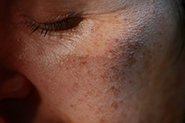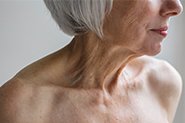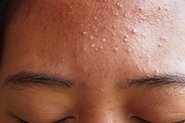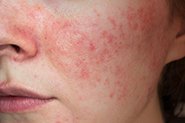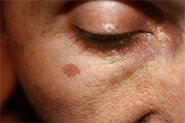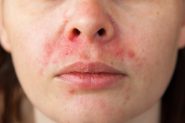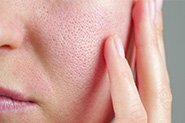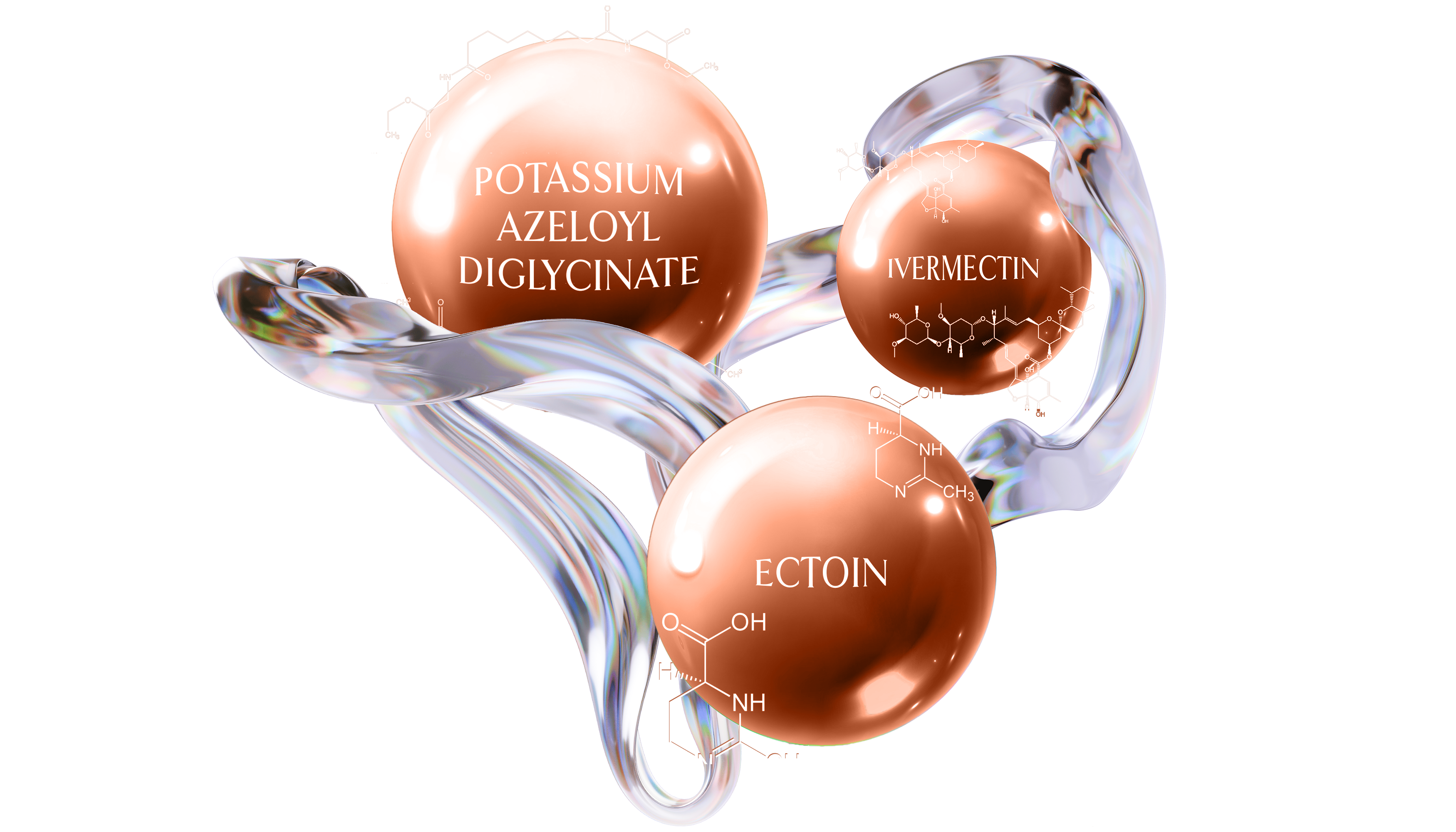
QR8: A Minimal Routine with Maximal Formulations
Did we need a glow up? No.
But did we have one? Of Course! Qr8 has been built on the needs of our patients, so we never stop innovating and looking for science-backed ingredients we can pack into our formulations. We are committed to delivering treatments that are evidence-based, whilst being as gentle as possible on your skin.
We know sensitive skin types can struggle with prescription skincare, so we’ve added some new cosmetic ingredients to soothe inflammation, hydrate the skin better, and minimise irritation, and we’ve added another prescription ingredient to our lineup that is especially for those who suffer with inflammatory skin conditions like rosacea and periorificial dermatitis.
We are excited to welcome you to a new era of topical medical treatments here at Qr8.
From new ingredients in our Barrier+ cream base that increase the ability of the most sensitive skin types to tolerate prescription treatments, to entirely new ingredients to improve patient outcomes, our glow up has it all.
Read all about our new ingredients below!
1. Potassium Azeloyl Diglycinate (PAD)
First up is Potassium Azeloyl Diglycinate, or PAD, a water-soluble derivative of azelaic acid. Azelaic acid has long been known for its multifaceted benefits in skincare, specifically for its ability to combat pigment issues, inhibit microbial growth, and reduce inflammation (particularly in conditions like acne and rosacea). However, its poor solubility, tendency to form crystals during shipping, and potential to cause skin irritation have posed hurdles for our patients.
PAD represents a significant advancement over traditional azelaic acid formulations. By combining azelaic acid with glycerine, PAD retains many of the therapeutic properties of azelaic acid while improving solubility (no more thick creams!), and moisturising capability. Our formulations incorporating PAD have been thoroughly tested for compatibility with other skincare products, so you can apply the correct amount of sunscreen and makeup with ease.
Studies have shown that formulations containing 5% PAD deliver comparable results to those with 15% azelaic acid for pigmentation and rosacea, with superior tolerability, making it a preferred choice for sensitive skin types. These studies also show it can reduce redness, visibility of broken capillaries, stinging and burning and pigmentation.
A quick warning – PAD is supplied by the manufacturer in a solution that only contains 30% of the PAD itself (not 100%), so our pharmacists have to do some maths to ensure you get 5% pure PAD in your treatment. If you see someone advertising a high percentage of PAD in a product, ask them what the actual percentage is – we have seen a few companies advertise using 10% PAD, when they are in fact using 10% of a 30% solution – so the final concentration of pure PAD is only 3%.
Welcome to the Qr8 Fam, PAD! 👋
2. Ectoin
Next in our new-ingredient-lineup is Ectoin, a natural amino acid derivative originally isolated from bacteria that live in extreme conditions (think deserts, high salt and acidic environments). In nature, ectoin protects skin cells from environmental stresses such as UV radiation, extreme temperatures, and pollutants. Its ability to bind water molecules and enhance skin hydration makes it a valuable addition to skincare formulations aimed at improving barrier function and combating dryness.
Clinical studies have demonstrated that Ectoin not only improves skin hydration and elasticity but also reduces redness, inflammation and irritation (such as from retinoid use), making it particularly beneficial for conditions like rosacea and atopic dermatitis, but also anyone using irritating prescription ingredients. Its photoprotective properties further contribute to overall skin health by minimizing UV-induced damage (along with your sunscreen of course!). Participants in one study preferred the ectoin-containing treatment for its cosmetic elegance (something that isn’t normally associated with compounded pharmacy treatments!).
We are excited to be adding Ectoin into the Qr8 Barrier+ Base to provide all Qr8 users with its benefits, but also have it available in higher-dosages when clinically necessary!
C’mon in Ectoin! 👋
3. Ivermectin
Our final new ingredient (for now!) is ivermectin. Recognized for its efficacy in combating parasitic infections, ivermectin has also demonstrated significant anti-inflammatory properties (yay skin!).
Studies show that topical application of ivermectin reduces inflammation and the inflammatory lesions associated with rosacea. It also causes the death of Demodex mites that have been reported to be a factor in inflammation of the skin.
We have added ivermectin into our existing rosacea formulation to offer patients a well-tolerated and effective all-in-one treatment option.
Stay tuned for another game-changing ingredient being introduced soon to treat the persistent skin redness associated with rosacea.
*Suitability for treatment subject to doctor assessment. Video medical consultation is always required prior to treatment. Not everyone is suitable for either remote treatment, or the type of treatments our service offers. All medical treatments carry risk. Individual results will vary and are not guaranteed.
WOULD YOU LIKE TO CHAT TO ONE OF OUR FRIENDLY DOCTORS ABOUT YOUR SKIN CONDITION?
CLICK HERE TO BOOK A CONSULT WITH OUR EXPERIENCED MEDICAL TEAM.
REFERENCES
- Maramaldi G & Esposito MA. Potassium azeloyl diglycinate: A multifunctional skin lightener. Cosmetics and Toiletries. 2002 117, 43-50.
- Celleno L, Bussoletti C, Caserini M, Palmieri R. Instrumental assessment of the soothing effect of a new product based on hydroxypropyl chitosan and potassium azeloyl diglycinate. J Plast Dermatol. 2012;8:33–5.
- Berardesca E, Iorizzo M, Abril E, Guglielmini G, Caserini M, Palmieri R, Piérard GE. Clinical and instrumental assessment of the effects of a new product based on hydroxypropyl chitosan and potassium azeloyl diglycinate in the management of rosacea. J Cosmet Dermatol. 2012 Mar;11(1):37-41. PMID: 22360333.
- Veraldi S, Raia DD, Schianchi R, De Micheli P, Barbareschi M. Treatment of symptoms of erythemato-telangiectatic rosacea with topical potassium azeloyl diglycinate and hydroxypropyl chitosan: Results of a sponsor-free, multicenter, open study. J Dermatolog Treat. 2015 Apr;26(2):191-2. PMID: 24831156.
- Viyoch J, Tengamnuay I, Phetdee K, Tuntijarukorn P, Waranuch N. Effects of trans-4-(aminomethyl) cyclohexanecarboxylic acid/potassium azeloyl diglycinate/niacinamide topical emulsion in Thai adults with melasma: a single-center, randomized, double-blind, controlled study. Curr Ther Res Clin Exp. 2010 Dec;71(6):345-59. PMID: 24688154.
- Galinski EA, Pfeiffer HP, Trüper HG. 1,4,5,6-Tetrahydro-2-methyl-4-pyrimidinecarboxylic acid. A novel cyclic amino acid from halophilic phototrophic bacteria of the genus Ectothiorhodospira. Eur J Biochem. 1985 May 15;149(1):135-9. PMID: 3838936.
- Casale M, Moffa A, Carbone S, Fraccaroli F, Costantino A, Sabatino L, Lopez MA, Baptista P, Cassano M, Rinaldi V. Topical Ectoine: A Promising Molecule in the Upper Airways Inflammation-A Systematic Review. Biomed Res Int. 2019 Aug 26;2019:7150942. PMID: 31534961
- Heinrich U, Garbe B, Tronnier H. In vivo assessment of Ectoin: a randomized, vehicle-controlled clinical trial. Skin Pharmacol Physiol. 2007;20(4):211-8. PMID: 17519560.
- Graf R, Anzali S, Buenger J, Pfluecker F, Driller H. The multifunctional role of ectoine as a natural cell protectant. Clin Dermatol. 2008 Jul-Aug;26(4):326-33. PMID: 18691511.
- Bownik A, Stępniewska Z. Ectoine as a promising protective agent in humans and animals. Arh Hig Rada Toksikol. 2016 Dec 1;67(4):260-265. PMID: 28033102.
- Kauth M, Trusova OV. Topical Ectoine Application in Children and Adults to Treat Inflammatory Diseases Associated with an Impaired Skin Barrier: A Systematic Review. Dermatol Ther (Heidelb). 2022 Feb;12(2):295-313. PMID: 35038127.
- Bünger J, Degwert J, Driller H: The protective function of compatible solute ectoin on the skin, skin cells and its biomolecules with respect to UV radiation, immunosuppression and membrane damage. IFSCC Mag 2001;4:127–131.
- Sharma A, Kroumpouzos G, Kassir M, Galadari H, Goren A, Grabbe S, Goldust M. Rosacea management: A comprehensive review. J Cosmet Dermatol. 2022 May;21(5):1895-1904. PMID: 35104917.
- Lee JJ, Chien AL. Rosacea in Older Adults and Pharmacologic Treatments. Drugs Aging. 2024 May;41(5):407-421. PMID: 38649625.


